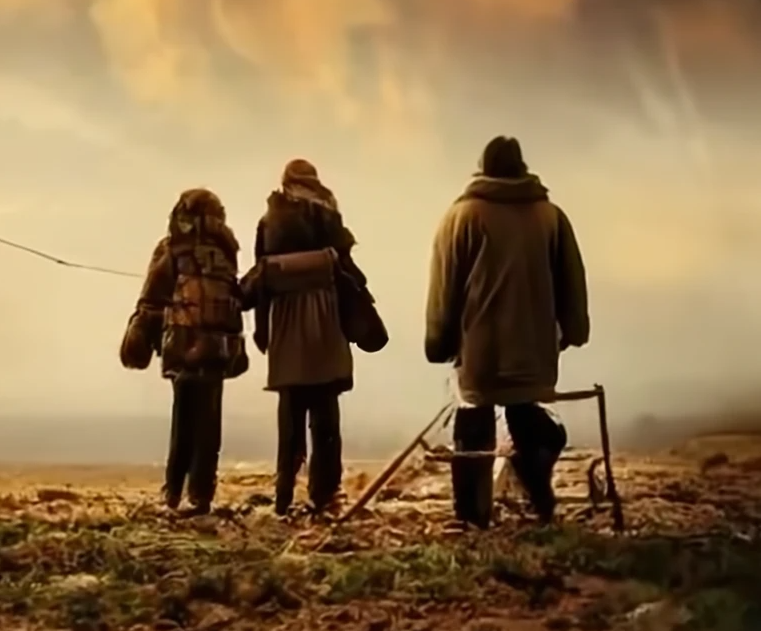Building a Prepper Community: Strengthening Resilience on Your Street
In today's unpredictable world, the importance of being prepared for wide-ranging emergencies cannot be overstated. While individual preparedness is vital, forming a prepper community within your local street or housing estate can provide additional layers of security and support.
Together, you can share resources, skills, knowledge and emotional support to enhance your collective resilience. Here's how to start and develop a prepper community in your neighborhood:
1. Assess Interest: The first step is to identify like-minded individuals in your street/estate/local community who share an interest in emergency preparedness. Start by having casual conversations with your neighbors to gauge their level of interest and readiness. You may be pleasantly surprised to find others who are already thinking along the same lines. Pro Tip: Hold off on revealing your deep-seated fears of an alien invasion or zombie apocalypse until you get to know them better. Concentrate on the more accepted emergencies such as natural disasters, electrical power disruptions and civil unrest.
2. Initiate Communication: Establish a communication channel to connect with potential community members. This could be a neighborhood social media group, a WhatsApp group, a dedicated email list, or even a physical notice board. Use this platform to introduce the idea of a prepper community and invite interested neighbors to join.
3. Organize a Meeting: Schedule an initial meeting where interested community members can come together to discuss their goals, concerns, and the scope of the prepper community. This meeting serves as a foundation for building trust, a shared vision and establishing common ground. Pro Tip: When first starting out, try to organize meetings in neutral territory, such as a park or public hall. You do not want to be inviting relative strangers into your home until you have first developed a level of trust and cooperation.
4. Define Roles and Responsibilities: Once your group has taken shape, identify the skills and resources each member brings to the table. Assign roles and responsibilities based on individual strengths. This could include designating someone as the medical expert, another as the food preservation specialist, and so on. You will be extremely fortunate to find any kind of health care professional, teachers, police, security professionals, engineers, psychologists, mechanics, cooks, gardeners, tradespeople, farmers, hunters, fishermen and homesteaders.
5. Develop an Emergency Plan: Collaboratively create a comprehensive emergency plan that addresses a range of potential SHTF scenarios. This plan should outline how your community will respond, where you'll gather, and how you'll communicate during emergencies.
6. Share Knowledge and Training: Encourage members to share their expertise and skills through workshops and training sessions. Cover topics like first aid, food storage, self-defense, and basic survival skills. Knowledge is a valuable asset, and it's important that everyone has access to it.
7. Resource Pooling: To enhance your collective resilience, consider pooling resources. This could involve creating a shared emergency supply cache or maintaining a community garden for food production. Sharing tools, equipment, and supplies can ensure everyone has access to what they need.
8. Establish a Communication Plan: In a crisis, communication is key. Set up a reliable communication network that includes both digital and analog methods. Ensure everyone knows how to reach each other, especially if conventional means like cell phones are unavailable.
9. Regular Drills and Exercises: Conduct periodic emergency drills and exercises to practice your community's response to various scenarios. These practice sessions can help identify weaknesses in your plan and improve overall readiness.
10. Build Trust: A strong prepper community relies on trust and cooperation. Foster a sense of camaraderie and support among members. Regular social gatherings and team-building activities can help build and maintain trust. Maintaining each member's personal privacy (see below) is also important.
11. Stay Informed: Keep abreast of current events and potential threats that may affect your area. Communicate these risks to your group. Regularly update your emergency plan to adapt to new information and risks.
12. Be Inclusive: Encourage inclusivity in your prepper community. While everyone may have different skills and backgrounds, diversity can be an asset, bringing fresh perspectives and ideas to the table. However, as the coordinator of the group, you also have the prerogative of determining which people will be assets and which are likely to be liabilities when SHTF in spite of any otherwise useful skills.
- Privacy: While a prepper community is about cooperation, respect for each member's privacy and boundaries is essential. Not everyone may be comfortable sharing the same level of personal information or resources. As the group leader, this will be a very important determinator of trust and group cohesiveness.
Building a prepper community in your local street or housing estate takes time and effort, but the strategic benefits in terms of safety and resilience are well worth it. By coming together with your neighbors, you not only increase your chances of survival during emergencies but also strengthen the bonds of community and mutual support in times of need. Remember, the strength of a prepper community lies in its unity and collective effort.

